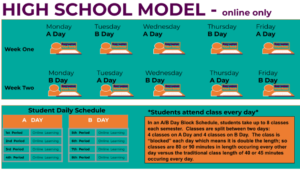10 Current and Emerging Trends in Adult Learning

What Do Harvey and Irma have to do with learning?
When (what we thought were) once in five hundred year storms hit every other week, it suggests there is something new going on–and another sign that we live in a world where the unexpected is the norm.
As more of us move into cities, connect and trade with people around the world, and take advantage of automation, the result is the clash of natural and man-made systems in ways that we don’t understand.
Urbanization, automation and globalization are resulting in unprecedented waves of novelty and complexity. The only thing we can be sure of is that change will occur more rapidly and more unexpectedly in the future. And that means we all need to learn fast and keep learning.
While that thought is daunting, there’s never a better time to learn–or teach. Five years ago in Getting Smart, I argued that the EdTech revolution would power customization, motivation and equalization–that new tools would boost personalization, engagement and expand access. We’re starting to see that play out–first in corporate training and development, then alternative HigherEd (think motivated adults with specific learning needs) and now in K-12 personalized learning models.
In many cases, it’s the power of relationships that is critically important. New learning models may leverage new tools, but they often facilitate sustained relationships–and that’s better than the best gamified learning system.
What does all of this mean for adult learning? What about young adults who didn’t finish high school? What about the more than 30 million Americans that earned some college credits but not a complete degree. What about adults new to speaking English who need job skills–fast? We see 10 trends in this adult learning.
1-3. Online, mobile and blended are foregone conclusions. As the NMC Horizon Report said, “If institutions do not already have robust strategies for integrating these now pervasive approaches, then they simply will not survive.”
4. Broader aims. Like leading K-12 schools, adult learning programs are adopting growth mindset (effort matters) and social and emotional learning (self and social awareness, self-management, responsible decision-making).
5. UI/UX. Adult learning programs are beginning to rethink user interface (UI) and the full user experience (UX). They are becoming more mobile responsive and beginning to think about how to incorporate augmented and virtual reality. WalMart uses VR to train employees for new roles. 
6. Better Feedback. Adaptive learning systems and platforms are providing real-time feedback, and digital curriculum usually includes embedded assessments.
Leading degree completion programs, like College for America, are incorporating project-based learning with authentic performance tasks.
7. Learner supports. Access to support services is key to success. For learners who have struggled, these services often go unused unless activated through an advisory relationship.
In high schools, academic monitoring and connections to support services are often managed in an advisory period (see 5 core and 10 optional functions)
In HigherEd, it’s important to have well-trained advisors who engage in active dialogue with adult learners about their aspirations and limitations in order to aid them in assessing various pathways to their chosen field. Platforms like Fidelis Education support learning relationship management including monitoring, coaching and tutoring.
Based on the successful tutoring program of the Match Charter Public School in Boston, Match Beyond combines the benefits of online learning with coaching and tutoring. Match features AA and BA degrees in business, healthcare and public service.
8. Employer partnerships. College for America, a program of Southern New Hampshire University, is a good example of a HigherEd completion program positioned as an employee benefit. A sequence of applied projects can be completed quickly by experienced learners and more slowly by workers that need more time and support.
A partnership between ASU Online and Starbucks provides full tuition reimbursement for staff members.
9. Mix & Match + Support. Want the fastest and cheapest path to a degree? Guild Education creates “education as an employee benefit” partnerships. Academic coaches work with adults to assemble fast and cheap degree pathways.
10. Collaboration is key for scaling effective solutions. Personalized learning is promising, particularly for older learners who have struggled academically. However developing a sophisticated learning model supported by an integrated set of tools remains very difficult. Working in networks–from informal learning communities to comprehensive models– is a promising response to complexity.
The NMC Horizon Report said, “Communities of practice, multidisciplinary leadership groups and open social networks can help spread evidence-based approaches.”
What’s Next?
1. Artificial intelligence behind everything. Most of the screens we view, from social media to learning platforms, are curated by artificial intelligence (AI). In the next few years, learning platforms will better monitor progress and recommend next steps. AI-based tools are providing quality writing feedback and will soon manage dynamic academic schedules.
2. Mastery transcripts. It’s increasingly a show what you know world. In many job categories, demonstrated mastery matters more than degrees.
With teachers earning microcredentials on Bloomboard, education could soon be a leading profession in the shift to competency. Student microcredentials aren’t far behind. About 140 independent schools have joined forces to advance a mastery transcript that summarizes demonstrated knowledge, skills and habits of mind by presenting evidence that is then assessed against an institutionally specific standard.
3. Automated skill assessment. Like adaptive learning and automated writing feedback, AI-powered skill assessment is improving rapidly.
Degreed offers skill certificates based on a combination of peer, expert and AI review. They hope to “jailbreak the degree” by recognizing skills gained on the job or through self-study.
4. Entrepreneurship. With more people freelancing and more employers seeking intrapreneurs, there is growing demand for entrepreneurship training–the basics of starting a business, marketing and finance with a Silicon Valley update including design thinking and iterative product development. There are a handful of MOOCs like MIT Launch and bootcamps like Stanford’s.
5. On demand learning. Many adults have little patience for new courses to begin. An increasing amount of adult learning will be on demand or with rolling enrollments. For example, CU-Boulder Continuing Education offers traditional online self-paced programs with rolling registration; students can begin at any time and complete programs in as little as two weeks or as much as six months. Program may begin with a fully online, self-paced introductory module followed by an immersive, in-person or live online cohort that begins every few weeks.
Entangled Solutions also highlights The University of Wisconsin Flexible Option program which allows students to start when they want, move through the program at their own pace, earn credit for what they already know, and advance in the program as they master competencies.
6. Own the learning plan. Now that we all need to keep learning, the scramble is on to support your learning plan. “Institutions must prioritize and recognize ongoing learning — both formal and informal — for their faculty, staff and students,” said the NMC Horizon Report.
Professional schools, alumni associations and online marketplaces (Udemy, Skillsoft, Linkedin) all want to be your primary learning provider.
7. National institutions. ASU president Michael Crow sees the rise of national service universities with (see Realm 4-5 in the graphic below) the development of tech-enhanced learning.
“We view scale as positive,” said Phil Regier, Dean for Educational Initiatives at ASU. “We’re going to use scale to get better. Digital learning tends to be scale games. As you get bigger you can make the technology better.” (Phil’s point is that with AI, #1, more data makes algorithms–and us–smarter.)
8. Impact opportunity. It’s never been easier to build an app, launch a campaign or assemble a big data set and analyze it with smart tools. The opportunity set allows young people to consider contribution now rather than 10 years from now.
It’s never been easier (in many locations) for high school students to earn valuable robotics and manufacturing certificates and step onto a work and learn ladder that provides a lucrative alternative to traditional HigherEd.
9. Advocacy. Despite our best efforts, it’s quite likely that income inequality will grow in the information economy. We need to continue to teach and advocate for working adults.
10. Conditions for learning. Adult learning outcomes may be as much a function of who you are as what you do. Sandy Shugart President of Valencia College (@valenciacollege) said, “There is no reason any human can’t learn anything.” He encouraged the educators, entrepreneurs and investors to quit classifying people based on their perceived ability.
A coherent system starts with the learner and their experience. “Rather than trying to figure out who will succeed and who won’t, now we ask ‘what are the right conditions for each learner to succeed?’” said Shugart.
For the last 20 years, the working theory at Valencia has been anyone can learn anything under the right conditions. “That changes the conversation,” added Shugart. “We change conditions in partnership with the learners.”
For more, see:









ambrabromano
Thanks a lot for publish this article with us.
Keep sharing such article.